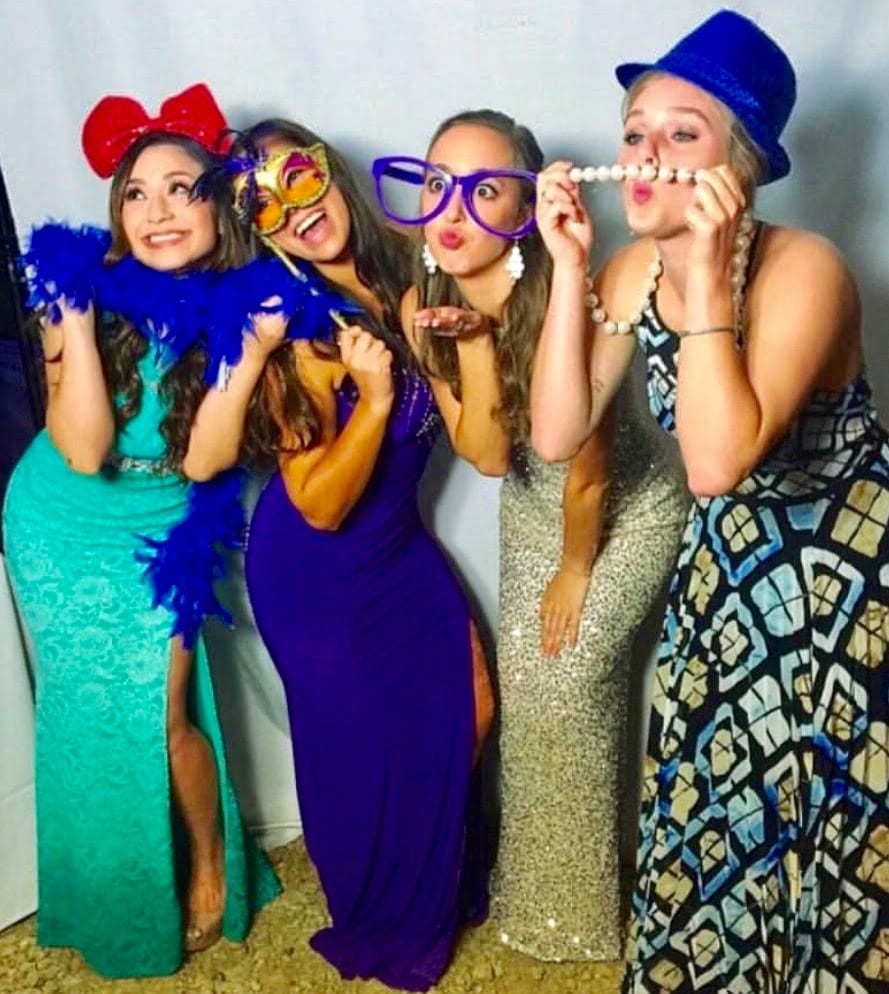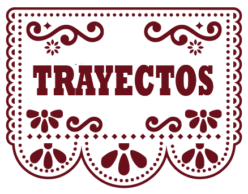Los verbos en presente (present tense of regular -ar verbs): Uso y forma
![]() Carolina en la biblioteca
Carolina en la biblioteca
Carolina, the new student we met in this module, is still learning how to do things at the university. Today Eileen and Amy are helping her at the library. ¿Qué necesita Carolina? Listen to their conversation and look at the transcript below. Pay attention to the verbs. What do you notice about the endings?

Carolina: Eileen: Amy: Eileen: Carolina: Eileen: Amy: Carolina:
¿Comprendiste? Responde estas preguntas sobre la conversación.
- Let’s talk about verbs first. See if you can find an example of the following in the dialogue:
Un verbo en infinitivo (An infinitive verb that does not have a conjugation. E.g., to talk, to write):
Unos verbos conjugados:
- Verbs conjugated in second person singular (tú form):
- Verbs conjugated in second person plural (ustedes form):
What do these verbs share? What do you already know about these verb endings?
Now let’s talk about the content of the dialogue (continue paying attention to the verb endings):
- ¿Qué necesita Carolina en la biblioteca?
- ¿Quiénes ayudan a Carolina?
- Si tú necesitas un libro, ¿dónde buscas el libro?
All the conjugated verbs that appear in the dialogue are in the present tense (el tiempo presente). In this section, we will learn how to conjugate verbs with the -ar ending in the present tense. ¡Manos a la obra!
The present Tense of –ar Verbs
I. Infinities and Conjugations
When you study verbs, you will need to know the difference between the infinitive form of the verb and the conjugated forms. In English, infinitives are verbs preceded by the word to. In Spanish, infinitives end in -ar, -er, or -ir.
tomar (to drink, to take classes); comer (to eat); vivir (to live)
These verbs are called infinitives because, like the concept of infinity, they are not bound by time. From the infinitive, we derive the conjugated forms of the verb. Of the three verb groups (-ar, -er, -ir), –ar verbs are the most numerous.
To conjugate, drop the –ar from the infinitive. Next, add endings to the stem. The ending will depend on who is doing the action (remember the subject, discussed in Módulo introductorio). Have a look at this example.
| Ayudar (to help) | ||
| yo | ayudo | I help |
| tú | ayudas | you (informal) help |
| vos | ayudás | you (informal) help; mostly Argentina & Uruguay |
| usted, él, ella | ayuda | you (formal) help, he/she helps |
| nosotros(as) | ayudamos | we help |
| vosotros(as) | ayudáis | y’all (informal: Spain) help |
| ustedes, ellos/ellos | ayudan | y’all help, they help |
II. Usos del tiempo presente
As in English, in Spanish we use the present tense to talk about what people do every day or in a general sense.
Efraín estudia en la biblioteca todos los días (every day). Bailey toma la clase de lingüística de la Dra. Moyna.
Unlike English, the present tense in Spanish can be used to talk about actions that are happening right now or that will happen in the future. Compare the two languages:
Amy y Eileen ayudan a Carolina. (Amy and Eileen are helping Carolina.) Carolina trabaja mañana en la biblioteca. (Carolina will work in the library tomorrow.)
![]() III. Ejemplos de verbos en -ar en las actividades de la universidad
III. Ejemplos de verbos en -ar en las actividades de la universidad
| bailar | to dance | llamar | to call; to phone |
| buscar | to look for | mirar | to watch, to look at |
| caminar | to walk | necesitar | to need |
| cantar | to sing | pagar | to pay for |
| comprar | to buy | pasar tiempo | to spend time with |
| contestar | to answer | practicar | to practice |
| desear | to want | preguntar | to ask a question |
| dibujar | to dance | reservar | to reserve |
| diseñar | to design | terminar | to finish |
| enseñar | to teach | tocar | to touch; to play an instrument |
| entrar | to enter | usar | to use |
| esperar | to hope; to wait for; to expect | viajar | to travel |
| hablar | to talk; to speak | visitar | to visit |
![]() IV. Frases útiles para hablar de actividades de la universidad
IV. Frases útiles para hablar de actividades de la universidad
| hablar por teléfono | to talk on the phone; to call | Efraín habla por teléfono con su mamá todos los fines de semana (every weekend). |
| descansar por unos minutos/por una hora | to rest for a couple of minutes/for an hour | Los profesores descansan por unos minutos entre (between) sus clases. |
| escuchar música | to listen to music | Carolina y Amy escuchan música en el gimnasio. |
| esperar el autobús | to wait for the bus | ¿Dónde esperás (vos) el autobús? |
| estudiar en la biblioteca | to study in the library | Mis compañeros de clase y yo estudiamos para el examen en la biblioteca. |
| llegar a la clase/a la universidad | to arrive at class/at the university | (Yo) llego a la universidad a las 8:00 de la mañana. |
| mandar un correo electrónico/un texto | to send an email/a text message | Dra. Moyna, ¿usted manda textos a sus estudiantes? |
| regresar a casa | to return home | ¿(Tú) regresas a casa en autobús? |
| tomar clases/un examen/el autobús | to take classes/exams/the bus | ¿Vosotros tomáis el examen de antropología mañana? |
| trabajar por la mañana/por la tarde/por la noche | to work in the morning/in the afternoon/at night | Las estudiantes trabajan por la tarde en el Starbucks en el centro estudiantil. |
![]() ¡Ojo!
¡Ojo!
- As you can see in the examples above, in Spanish the meaning of the English word for is included in the verbs buscar (to look for), esperar (to wait for), and pagar (to pay for). Also, to is included in the verb escuchar (to listen to).
- As in English, when you use two Spanish verbs together with the same subject, the second verb is usually in the infinitive. This is common with the verbs desear, esperar, and necesitar.
Carolina y Efraín desean estudiar en el edificio Académico. Yo espero trabajar en la biblioteca. Bailey necesita llamar a su familia.
- Remember that when you want to use a conjugated verb in the negative form, the word no is placed before the conjugated verb. It’s easy!
Mi compañera de cuarto no habla español. No, chicos, ustedes no necesitan comprar un libro de texto para la clase. Carolina no baila en la discoteca.
Now it’s time to use our new vocabulary and structures Actividad 1-10. La fiesta de Bailey y Carolina. Paso 1. Bailey and Carolina decide to organize a party to celebrate the beginning of the semester. Carolina writes about it in her blog. What is she saying? First read the paragraph to get a general sense of its content. Then fill in the blanks with the correct present tense conjugation of the numbered infinitives. ¿Son tus fiestas similares o diferentes? El blog de Carolina ¡Hola, amigos! Esta noche hay una fiesta en mi apartamento. Mi amiga Bailey y yo 1. (desear) _____________ celebrar el comienzo del semestre. Nuestros (Our) amigos Efraín y Amy 2. (bailar) _____________ y 3. (cantar) _____________ mientras (while) Marlenie 4. (tocar) _____________ la guitarra y otros estudiantes 5. (escuchar) _____________ la música. Verónica 6. (llamar) _____________ a su novio por teléfono y Mauro y yo 7. (tomar) _____________ unas Coca Colas. Claro (of course), todos nosotros 8. (mirar) _____________ nuestros teléfonos y 9. (mandar) _____________ textos. La fiesta es fenomenal. Mis amigos 10. (descansar) _____________ de las clases y la rutina de la universidad. Es importante el relax. OK. Yo 11. (terminar) _____________ mi blog. Es hora de bailar. ¿Tú 12. (pasar) _____________ tiempo con tus amigos también? ¿Tú 13. (esperar) _____________ descansar este fin de semana (this weekend)? ¿Ustedes 14. (visitar) _____________ a sus amigos este fin de semana? Deja (Leave) tus comentarios. ¡Nos vemos! Chau. ¿Son tus fiestas similares? Con un@ compañer@, describe tu fiesta. Write a blog similar to the one written by Carolina. Describe what happens at your party. Use at least 10 different verbs. You guys will need to present your party to the class! And, if you have photos, you can show them too! Actividad 1-11. Las actividades de los estudiantes en el mundo hispano In this activity, you will learn about an international student studying Spanish in Barcelona. Her name is Caroline. Before you do the activities, let’s learn more about the place. Paso 1. Antes de ver Contesta las preguntas a continuación. ¿Dónde está Barcelona? Busca esta ciudad en un mapa Ahora mira este video sobre una estudiante en Barcelona. Check if the activities that you mentioned appear in the video. Mira el vídeo en https://bit.ly/Video1-4Trayectos y contesta esta pregunta: ¿Las actividades de Caroline son similares o diferentes a tus actividades? Ahora mira el vídeo otra vez y completa las siguientes actividades. Trabaja con un@ compañer@. Actividad A. Main idea. Using the information and images in the video, describe its main purpose. Who is the audience the filmmakers had in mind? Why? What meaning-making resources (e.g., images, music, etc.) have the filmmakers used to attract the attention of their intended audience? Actividad B. Supporting details. Circle the number of each detail that is mentioned/shown in the video (not all are included!). Actividad C. More details. Now read the following sentences, and choose the option that appears in the video. Actividad D. Análisis. Contesta estas preguntas sobre el vídeo. Use as much Spanish as you can. Ahora con tres o cuatro compañeros, create a table comparing your activities and Caroline’s. Talk about at least 3 different activities en la mañana, en la tarde y en la noche. Talk about yourselves individually (yo forms), two of you (ellos/ellas), one of you in third person (él/ella), and you all (nosotros). Imagine that you are on vacation in Barcelona, and you go to a party. You see Caroline, and you start a conversation with her. Work with a partner. One of you is going to be Caroline, and is going to use the information in the video to do this activity. Greet each other and get to know each other better: You need to use the vocabulary and questions in the previous sections and exercises in this module and in Módulo introductorio. You will share your conversation with other classmates.![]() ¡Manos a la obra!
¡Manos a la obra!
![]() Paso 2
Paso 2
![]() Paso 2. A ver
Paso 2. A ver![]() Paso 3. Después de ver
Paso 3. Después de ver
![]() Paso 4.
Paso 4.
![]() Actividad 1-12. Caroline y yo.
Actividad 1-12. Caroline y yo.
Click on the following button to continue using your new verbs.
Now that we know more about verbs in Spanish, let’s learn some expressions we can use to talk about when we do activities en la universidad. It’s time for


